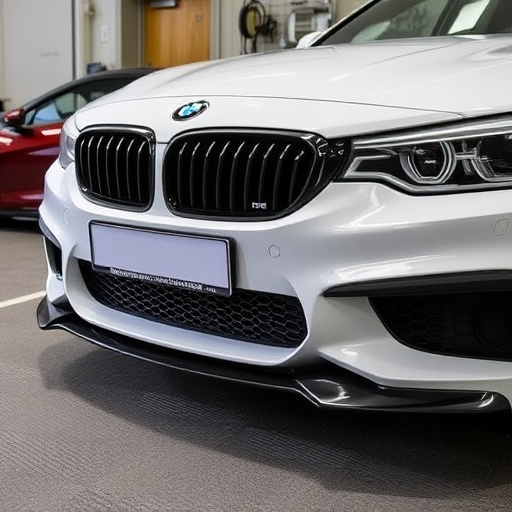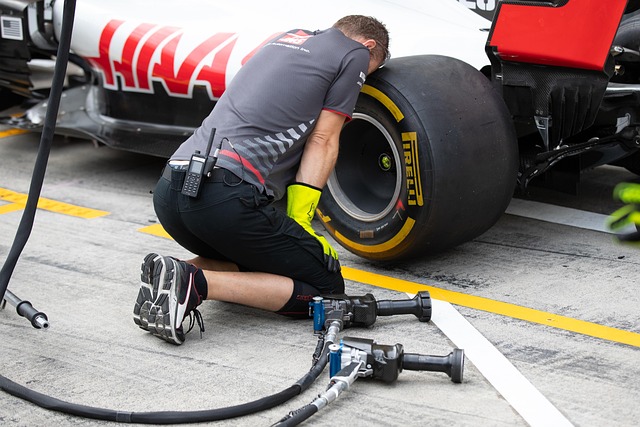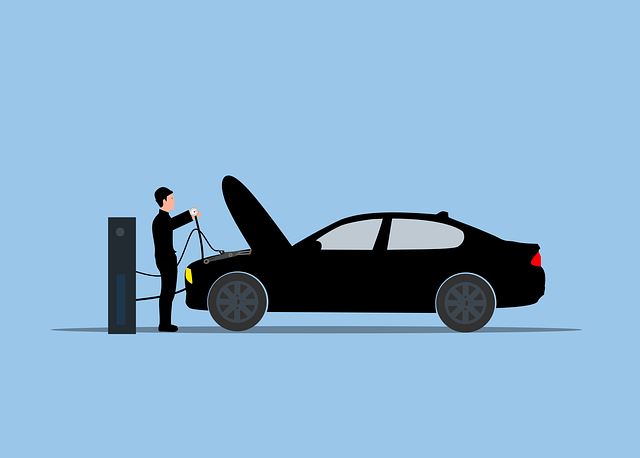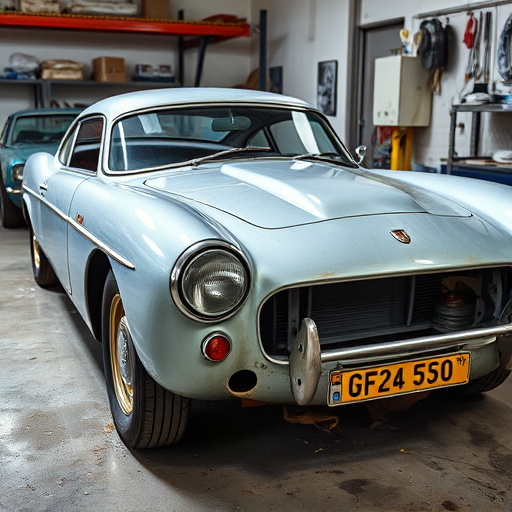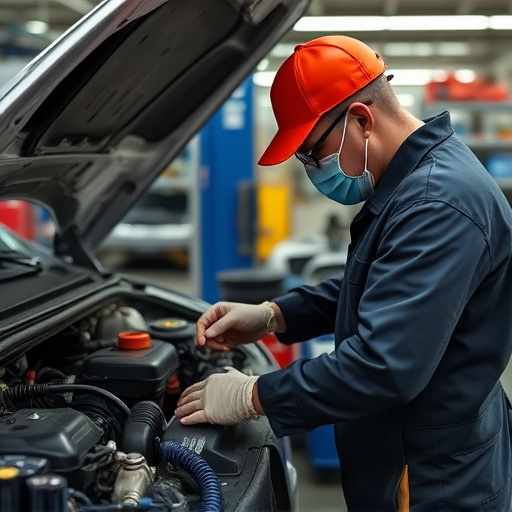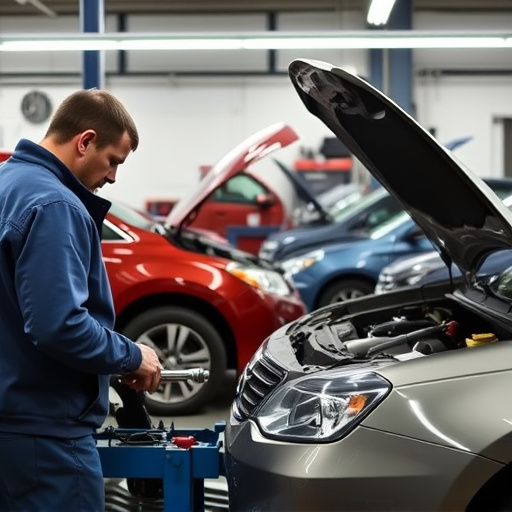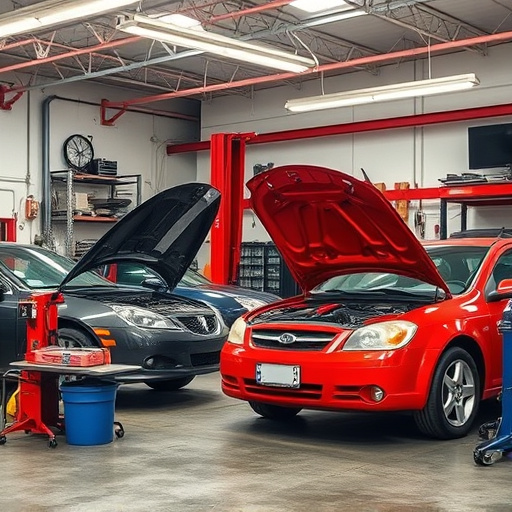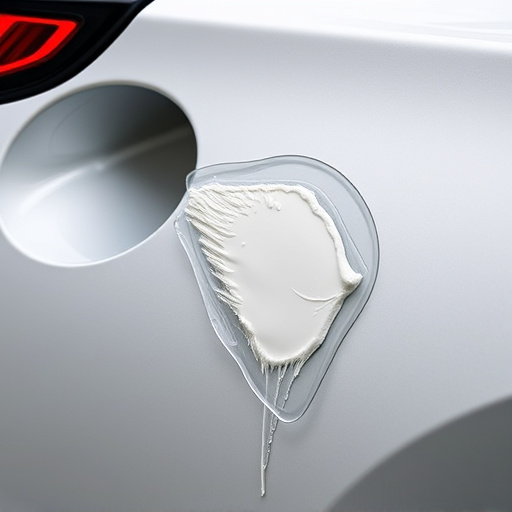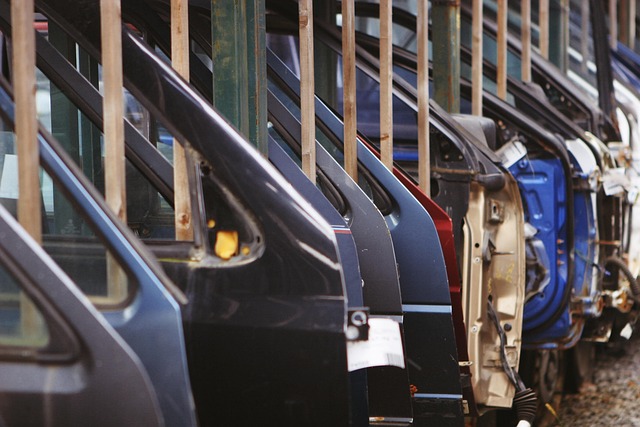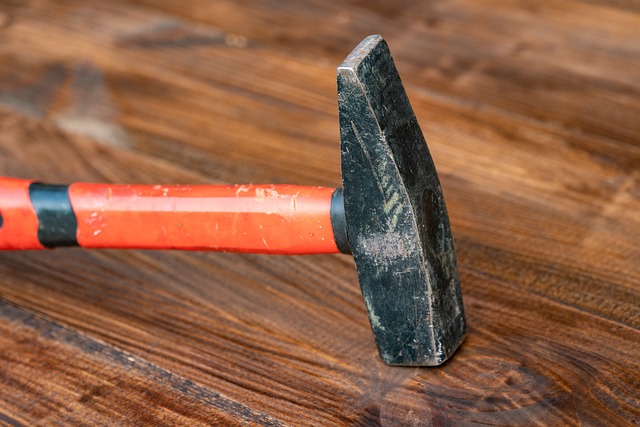PDR for aluminum panels is a specialized, non-invasive auto body repair technique that removes dents, dings, and scratches without damaging paint or compromising structural integrity. It requires strict adherence to safety protocols, including protective gear, to mitigate risks to technicians and ensure long-lasting repairs. Balance between risk mitigation and quality is crucial, with proper training, best practices, and specialized tools ensuring minimal damage, accurate repairs, and flawless finishes on delicate aluminum panels.
“In the realm of automotive repair and restoration, the Pop-and-Drag (PDR) method for aluminum panels has emerged as a game-changer. This innovative technique offers efficient, high-quality results. However, navigating this process requires meticulous safety considerations to mitigate risks.
This article delves into the intricacies of PDR for aluminum panels, guiding readers through essential safety gear, protective measures, and risk mitigation strategies to ensure successful and safe outcomes.”
- Understanding PDR for Aluminum Panels Process
- Essential Safety Gear and Protective Measures
- Mitigating Risks and Ensuring Quality Results
Understanding PDR for Aluminum Panels Process
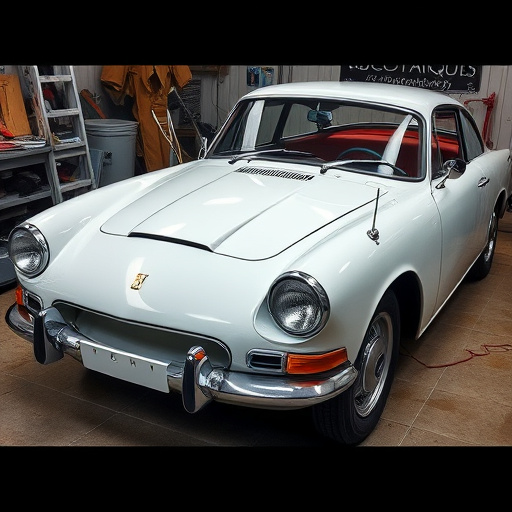
PDR for aluminum panels, or Paintless Dent Repair, is a specialized process designed to restore damaged automotive surfaces, focusing primarily on aluminum car bodies. This non-invasive technique has gained popularity in the automotive industry as an efficient and cost-effective alternative to traditional auto body repairs. By utilizing trained technicians and advanced tools, PDR effectively removes dents, dings, and scratches from aluminum panels without damaging the surrounding paintwork or compromising the vehicle’s structural integrity.
The process involves several steps, including inspection, planning, and precise manipulation of the damaged area using specialized tools. Technicians employ their expertise to gently work around the dented area, adjusting the panel back to its original shape while ensuring a seamless finish. This method is particularly advantageous for minor automotive dents and scratches, as it preserves the vehicle’s value and aesthetic appeal, making it a preferred choice in the realm of car dent repair and even automotive collision repair.
Essential Safety Gear and Protective Measures
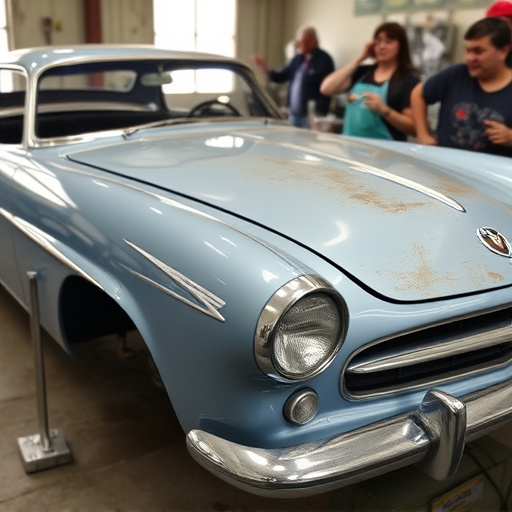
When performing PDR for aluminum panels, proper safety gear and protective measures are non-negotiable. This includes wearing safety glasses to shield against debris and metal shavings, gloves to protect hands from direct contact with materials and potential chemical irritants, and ear protection to mitigate noise exposure during the process. Respiratory protection is also crucial, especially when using abrasive tools or chemicals, as these can release harmful particles into the air.
Additionally, technicians should wear long-sleeved clothing and pants to prevent skin irritation from direct contact with panel surfaces or chemical compounds. Working in a well-ventilated area is essential for minimizing exposure to volatile organic compounds (VOCs) commonly used in automotive repair services, including PDR procedures. These precautions are vital not just for the technician’s health but also for ensuring the effectiveness and longevity of the paintless dent repair process on aluminum panels.
Mitigating Risks and Ensuring Quality Results
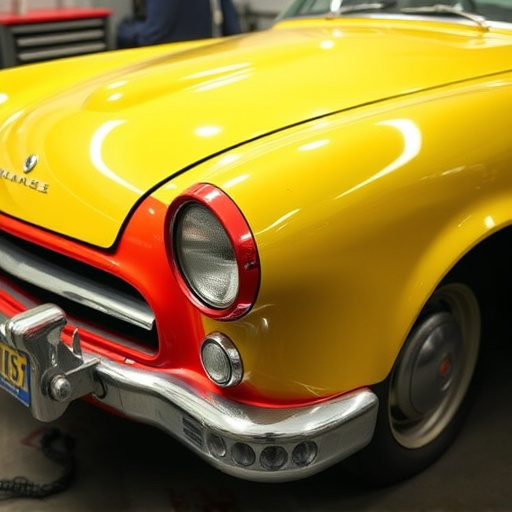
In the realm of PDR for aluminum panels, mitigating risks and ensuring quality results go hand in hand. When performing auto body services on vehicles, especially those with delicate aluminum panels, careful consideration is paramount. Proper training and adherence to best practices are essential to minimize damage and achieve precise repairs. Utilizing specialized tools designed for PDR on aluminum ensures that the integrity of the panel is maintained throughout the car damage repair process. This meticulous approach not only prevents further vehicle collision repair complications but also guarantees a flawless finish, preserving the aesthetic value of the metalwork.
The quality of results in PDR for aluminum panels directly correlates with the safety measures taken during the repair process. Skilled technicians must be adept at navigating the intricate landscape of aluminum panel repairs, understanding that each car damage repair presents unique challenges. By implementing stringent safety protocols and staying updated with industry standards, auto body services can deliver exceptional outcomes while safeguarding both the vehicle and the technicians involved in the vehicle collision repair process.
PDR (Paintless Dent Repair) for aluminum panels offers a precise and safe method of restoration, but it demands proper safety considerations. By understanding the process, investing in essential safety gear, and implementing robust protective measures, technicians can effectively mitigate risks and deliver high-quality results. These precautions are vital to ensure both the integrity of the aluminum panels and the well-being of the professionals performing the repair, making PDR for aluminum a reliable and efficient solution within the automotive industry.
